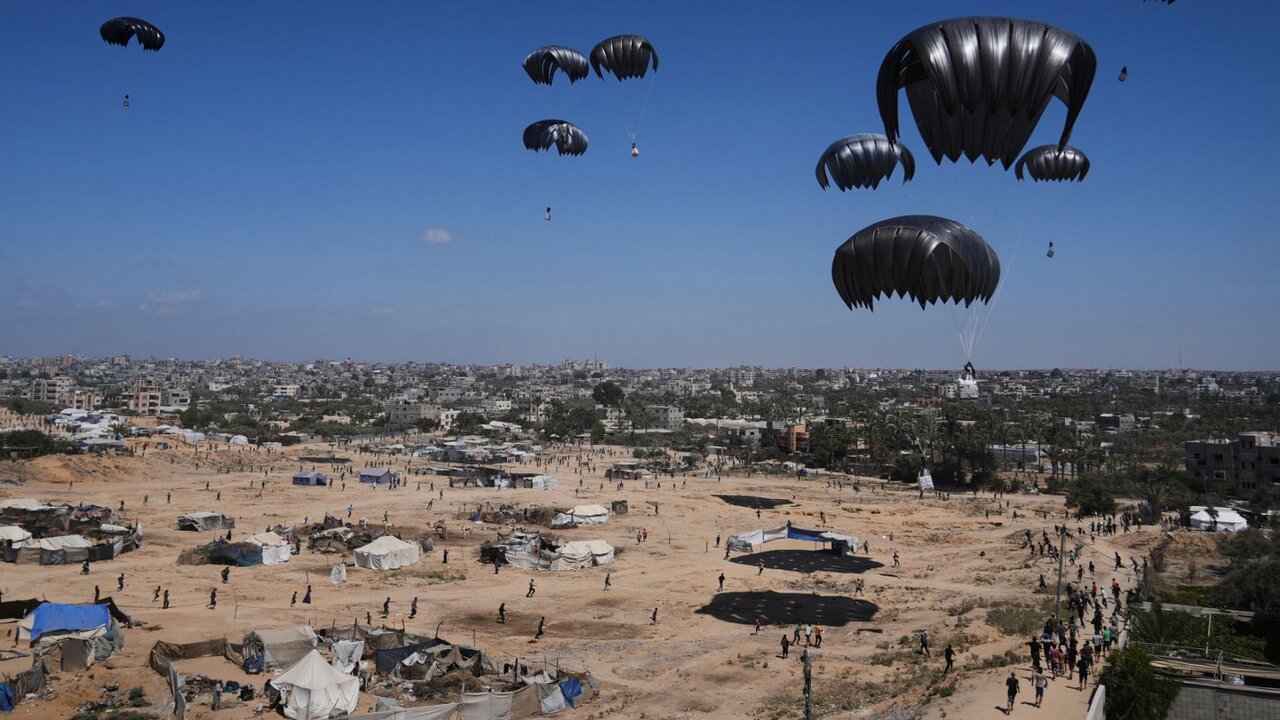Gaza sees surge in fatalities from failed aid airdrops

TEHRAN – The number of Palestinians killed due to misdirected airdrops of humanitarian aid has risen to 23, with 124 others injured.
The Government Media Office in Gaza made the announcement in a statement after collecting data from all airdrops of aid since the start of the Israeli genocidal war on the coastal strip.
The office emphasized that most of the aid drops have landed in areas controlled by Israeli occupation forces or in neighborhoods that have been forcibly emptied of residents, placing anyone who approaches them at risk of being directly targeted and killed.
In addition to falling in uninhabited or dangerous areas, many of the airdrops land between crowded residential zones, making them both ineffective and hazardous for civilians struggling under siege and starvation.
The statement also noted that in previous incidents, some aid parcels had fallen into the sea, resulting in the drowning of 13 Palestinians last year.
The media office reiterated its repeated warnings about the dangers of these inhumane methods and called for the urgent and secure delivery of aid, especially food, baby formula, medicine, and medical supplies, through land crossings.
It condemned the occupying regime’s continued policy of “engineering starvation and chaos,” holding the Zionist regime, the U.S., the involved countries, and the broader international community fully responsible.
The office called for immediate and serious action to open land crossings and allow the unrestricted flow of humanitarian aid.
Caroline Willemen, a project coordinator at a Médecins Sans Frontières (Doctors Without Borders) clinic in Gaza City, told British media, “These air drops are falling in extremely populated areas. They’re dangerous. They have fallen on tents, people have been injured.”
Aid groups have also pointed out that the drops can only provide a fraction of what is required for Gaza’s population of more than two million people as the hunger crisis continues to spiral and much of the enclave plunges into famine conditions.
The UN Relief and Works Agency for Palestine Refugees (UNRWA), underscored the need to open road crossings to supply aid at scale across the Gaza Strip.
“Airdrops are at least 100 times more costly than trucks. Trucks carry twice as much aid as planes,” UNRWA Commissioner-General Philippe Lazzarini emphasized in a post on social media.
“If there is political will to allow airdrops, which are highly costly, insufficient, and inefficient, there should be similar political will to open the road crossings,” he stressed.
Lazzarini further noted that UNRWA has 6,000 trucks loaded with aid stuck outside Gaza waiting for permission to enter.
During the ceasefire earlier this year, UNRWA and other UN agencies were able to bring in 500 to 600 trucks of aid each day.
“Aid reached the entire population of Gaza in safety and dignity. It succeeded to reverse the deepening starvation without any aid diversion,” the UNRWA head said.
The Berlin-based Center for Humanitarian Action (CHA) called it “the most senseless airlift ever” as well as “symbolic politics and a waste of money.” Its director, Ralf Sudhoff, said airlifts were up to 35 times more expensive than land convoys.
German charity Welthungerhilfe also described the airdrops as “symbolic” and “ineffective.”
Oxfam and other aid organizations have echoed those words.
The Israeli occupation regime has denied access to the totally blockaded Gaza Strip by almost all international NGOs.
This has led to mass starvation and malnourished civilians, with women, children, and the elderly struggling to survive, coupled with a deadly famine spreading across the enclave.
Leave a Comment